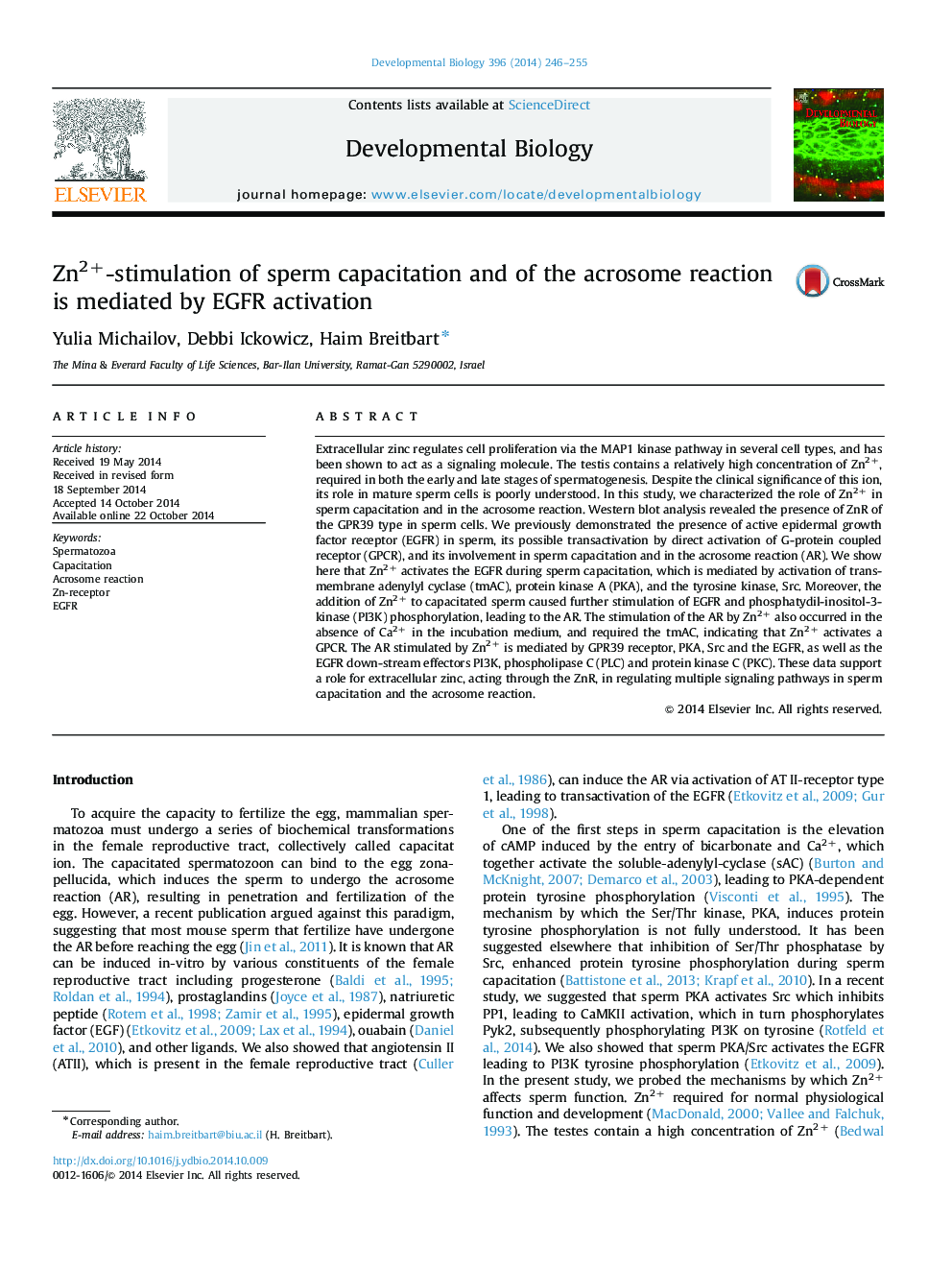| Article ID | Journal | Published Year | Pages | File Type |
|---|---|---|---|---|
| 10931552 | Developmental Biology | 2014 | 10 Pages |
Abstract
Extracellular zinc regulates cell proliferation via the MAP1 kinase pathway in several cell types, and has been shown to act as a signaling molecule. The testis contains a relatively high concentration of Zn2+, required in both the early and late stages of spermatogenesis. Despite the clinical significance of this ion, its role in mature sperm cells is poorly understood. In this study, we characterized the role of Zn2+ in sperm capacitation and in the acrosome reaction. Western blot analysis revealed the presence of ZnR of the GPR39 type in sperm cells. We previously demonstrated the presence of active epidermal growth factor receptor (EGFR) in sperm, its possible transactivation by direct activation of G-protein coupled receptor (GPCR), and its involvement in sperm capacitation and in the acrosome reaction (AR). We show here that Zn2+ activates the EGFR during sperm capacitation, which is mediated by activation of trans-membrane adenylyl cyclase (tmAC), protein kinase A (PKA), and the tyrosine kinase, Src. Moreover, the addition of Zn2+ to capacitated sperm caused further stimulation of EGFR and phosphatydil-inositol-3-kinase (PI3K) phosphorylation, leading to the AR. The stimulation of the AR by Zn2+ also occurred in the absence of Ca2+ in the incubation medium, and required the tmAC, indicating that Zn2+ activates a GPCR. The AR stimulated by Zn2+ is mediated by GPR39 receptor, PKA, Src and the EGFR, as well as the EGFR down-stream effectors PI3K, phospholipase C (PLC) and protein kinase C (PKC). These data support a role for extracellular zinc, acting through the ZnR, in regulating multiple signaling pathways in sperm capacitation and the acrosome reaction.
Related Topics
Life Sciences
Biochemistry, Genetics and Molecular Biology
Cell Biology
Authors
Yulia Michailov, Debbi Ickowicz, Haim Breitbart,
